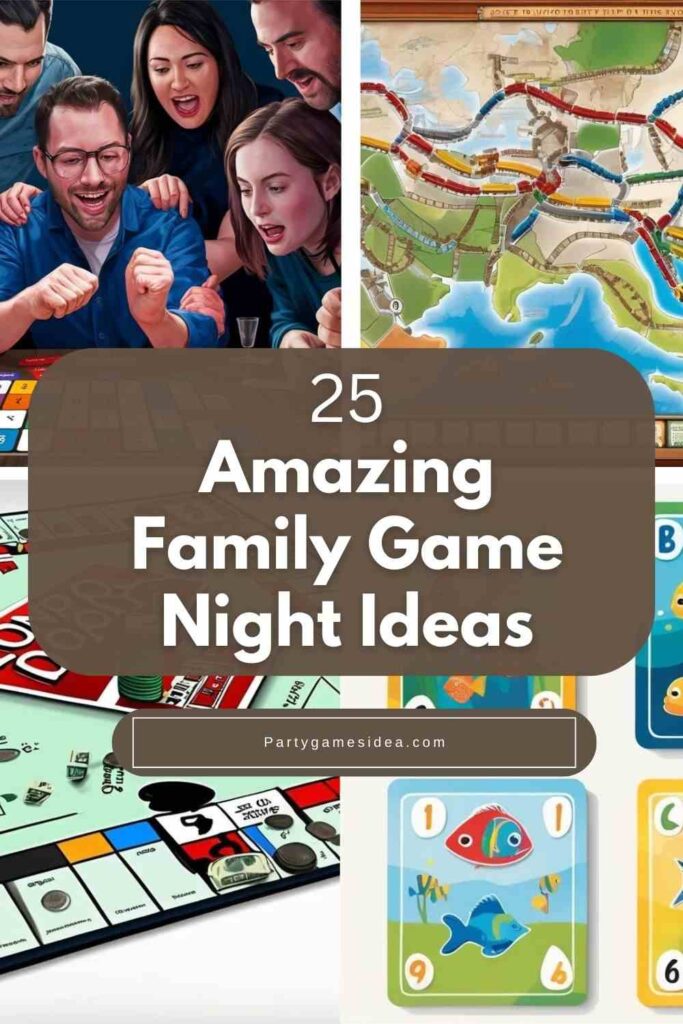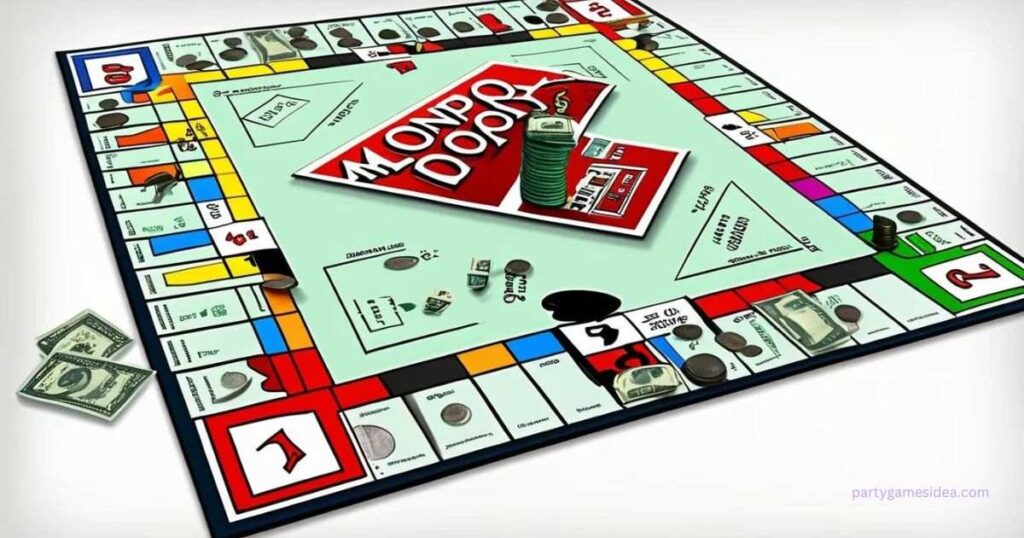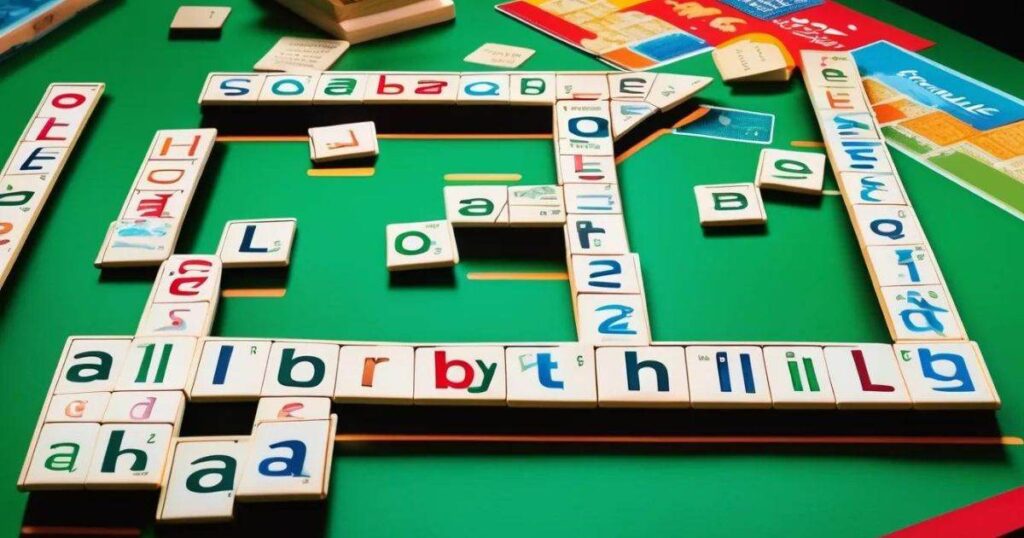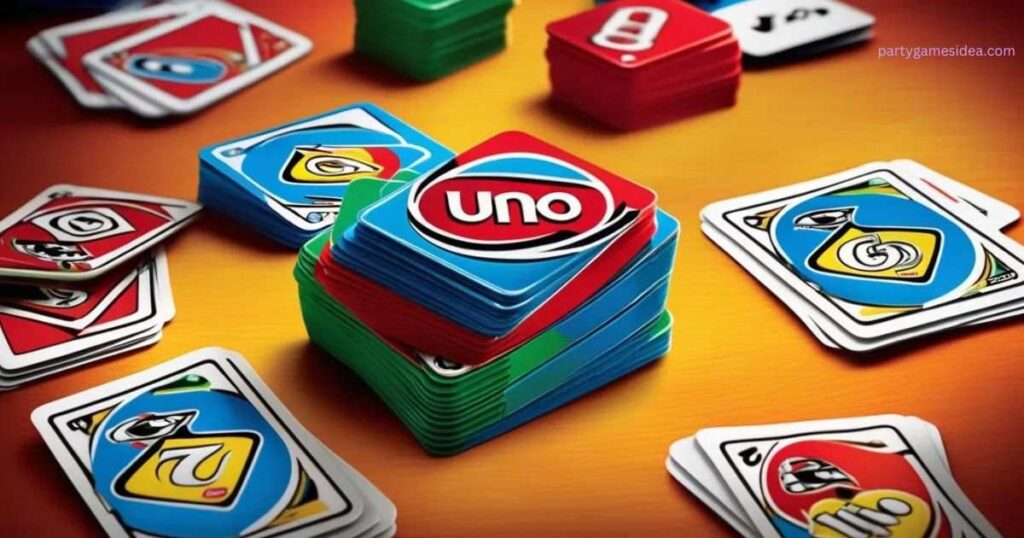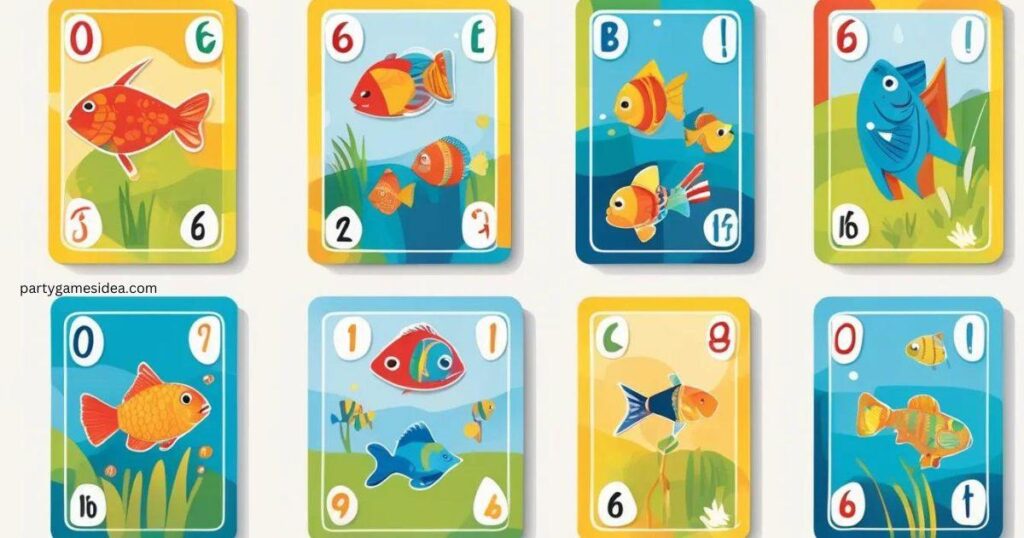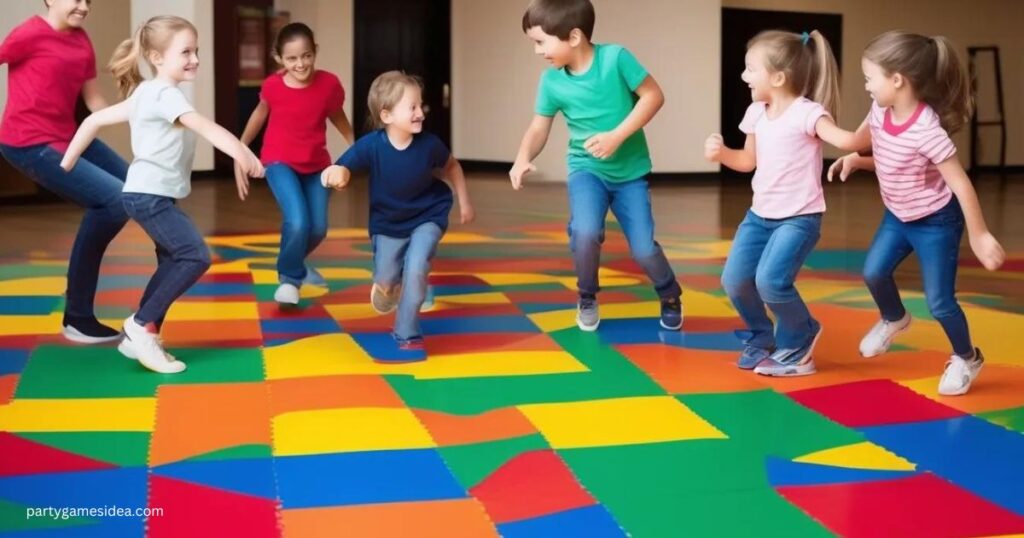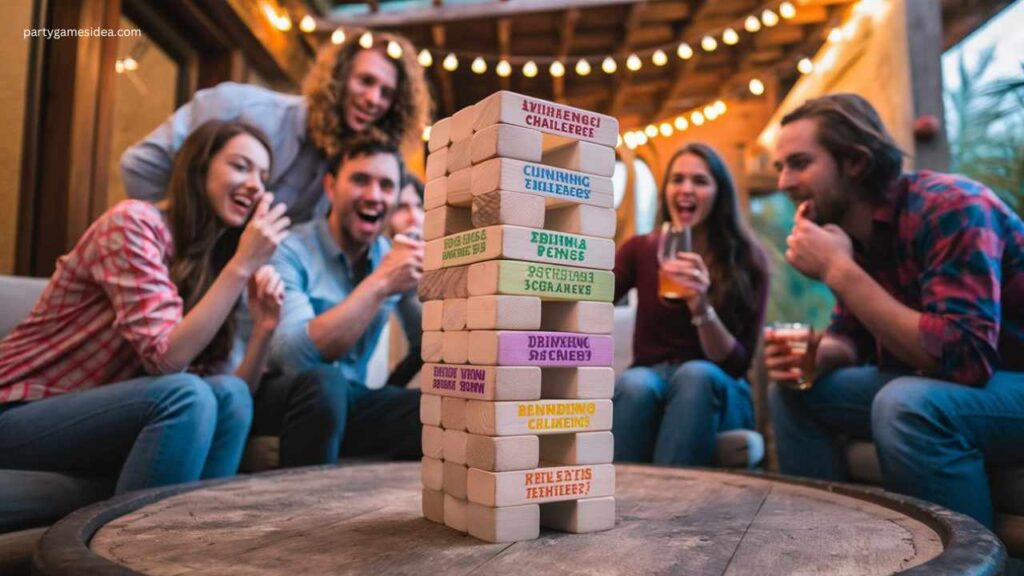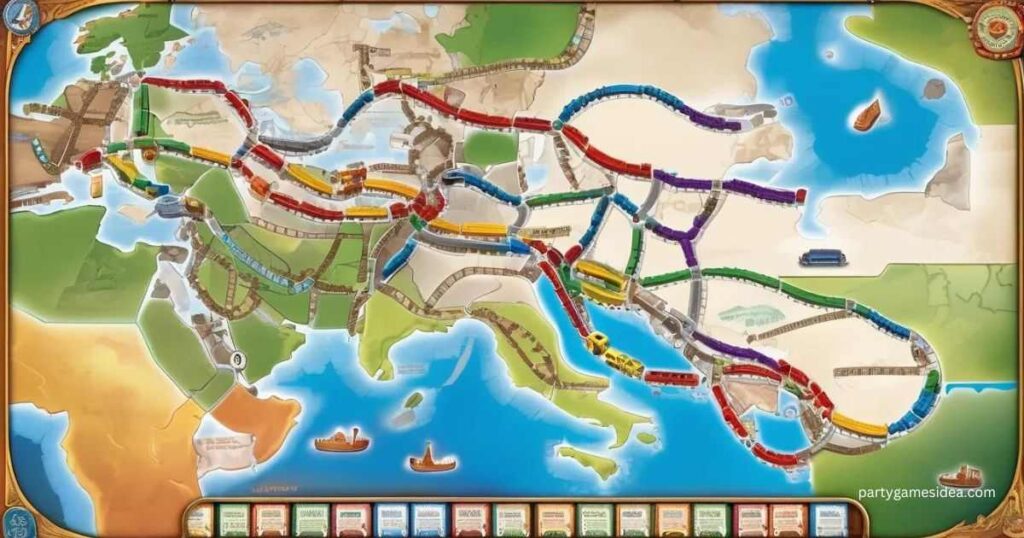Family game nights are more than just an opportunity to have fun; they play a crucial role in strengthening family bonds and creating lasting memories. In a world where everyone is often caught up in their own busy schedules, setting aside time for Family Game Night Ideas offers a much-needed break from routine and fosters a sense of togetherness.
Spending quality time together through games has numerous benefits. It not only enhances communication and teamwork but also provides a platform for laughter and shared experiences. Whether it’s a classic board game, an engaging card game, or an interactive physical challenge, these moments of connection are invaluable. By dedicating time to these activities, families can build stronger relationships, encourage positive interactions, and create a fun environment where everyone feels involved and valued.
Amazing Family Game Night Ideas
Looking for ways to make your next family game night unforgettable? Whether you’re into classic board games, quick card games, or interactive challenges, these 25 amazing Family Game Night Ideas offer something for everyone. From testing your strategy skills in Monopoly and Scrabble to getting creative with Pictionary and Charades, each game brings its own unique blend of fun, learning, and bonding. These ideas are designed to cater to all ages, ensuring that every family member has a chance to shine and create lasting memories together.
1. Monopoly
Dive into the classic real estate game where players buy, sell, and trade properties. It’s a fun way to teach kids about money management while enjoying some friendly competition.
2. Scrabble
Test your family’s vocabulary skills with this word-building game. It’s a great way to enhance language skills and enjoy some clever wordplay together.
3. Uno
This fast-paced card game is perfect for all ages. With simple rules and a lot of strategic play, Uno ensures everyone has a blast and keeps the game night exciting.
4. Go Fish
Ideal for younger children, this simple card game helps develop memory and matching skills while providing lots of opportunities for laughter and fun.
5. Family Pictionary
Unleash your inner artist with Pictionary, where players draw clues for their team to guess. It’s a creative and hilarious game that brings out everyone’s artistic side.
6. The Charades Game
Act out words or phrases without speaking while your family tries to guess. Charades is a timeless game that encourages creativity and provides lots of laughs.
7. Twister
Add some physical fun with Twister, where players place their hands and feet on colored spots according to the spinner’s call. It’s a great way to get everyone moving and laughing.
8. Jenga
Stack wooden blocks and remove them one by one without causing the tower to fall. Jenga challenges your steady hand and strategic thinking, making it a thrilling game for all ages.
9. Codenames
In this word game, players give clues to help their team identify secret agents. It’s a great game for enhancing teamwork and critical thinking while enjoying a bit of friendly competition.

10. Ticket to Ride
Build train routes across the country in this strategic board game. Ticket to Ride is engaging and educational, offering a fun way to explore geography and strategy.
11. Azul
Create beautiful tile mosaics in this visually stunning game. Azul encourages strategic planning and spatial awareness, all while providing a relaxing and enjoyable experience.
12. Exploding Kittens
A quirky and fun card game where players try to avoid drawing exploding kitten cards. It’s quick, easy to learn, and perfect for adding a bit of humor to your game night.
13. Family Trivia
Create a trivia game with questions about family history, interests, and inside jokes. It’s a personalized way to test your family’s knowledge and share stories.
14. Scavenger Hunt
Set up a scavenger hunt around the house or yard with clues leading to hidden items. This active game promotes problem-solving and exploration, making it a thrilling family activity.
15. DIY Bingo
Customize Bingo cards with themes relevant to your family’s interests. It’s a fun, adaptable game that can be enjoyed by players of all ages.
16. Minute to Win It Challenges
Set up a series of quick, fun challenges using household items. This game night staple is perfect for encouraging friendly competition and creativity.
17. Virtual Escape Room
Participate in a digital escape room experience as a family. It’s a great way to engage in problem-solving and teamwork from the comfort of your home.
18. Family Jeopardy
Create a Jeopardy-style quiz game with categories and questions tailored to your family. It’s a fantastic way to test your knowledge and have a bit of friendly rivalry.
19. Who Am I?
A guessing game where players ask yes-or-no questions to figure out their assigned character. It’s entertaining and promotes deductive reasoning and communication skills.
20. Guess the Year
Challenge your family to identify the year significant events or pop culture moments occurred. It’s an engaging way to test your historical knowledge and have fun discussions.
21. DIY Board Games
Design and create your own board games using craft supplies. This activity is a creative and educational way to involve everyone in the game-making process.
22. Family Karaoke
Set up a karaoke session with favorite songs and sing along together. It’s a lively way to enjoy music and showcase your family’s hidden singing talents.
23. Escape Room Puzzle
Create your own escape room with puzzles and clues around the house. This activity challenges problem-solving skills and adds an exciting adventure element to game night.
24. Cook-Off Challenge
Have a family cook-off where each member prepares a dish or dessert. It’s a fun way to explore culinary skills and enjoy a tasty meal together.
25. Storytelling Game
Start a story with a sentence and take turns adding to it. This game fosters creativity and imagination, resulting in hilarious and unique family stories.
Interactive and Physical Games
Interactive and physical games are perfect for bringing energy and excitement to family game night. These games get everyone up and moving, fostering a fun, lively atmosphere where laughter and creativity take center stage. Whether you’re acting out clues, drawing pictures, or tackling quick challenges, these games are all about engaging the entire family in a shared experience.
Charades
Description and Rules:
Charades is a classic game where players act out a word or phrase without speaking, while the rest of the group tries to guess what it is. The player can use gestures, facial expressions, and movements, but no words or sounds are allowed. The game is typically played with teams, and points are awarded for correct guesses within a time limit.
Tips for Making It More Fun and Engaging:
- Set a Timer: Use a timer to keep the game fast-paced and add excitement.
- Use Categories: Choose categories like movies, books, or animals to narrow down the options and make guessing easier.
- Mix It Up: Include both easy and challenging phrases to keep all players engaged.
- Costume Props: Add simple props or costumes for added fun and creativity.
Pictionary
Description and Rules:
Pictionary is a drawing game where players sketch a word or phrase while their team tries to guess what it is. The drawer cannot use any letters or numbers in their drawings. Like charades, the game is usually played with teams, and points are awarded for correct guesses within a time limit.
Variations for Different Skill Levels:
- Easy Mode: Use simple words and allow more time for younger players or beginners.
- Advanced Mode: Challenge older players with complex words or phrases and a shorter time limit.
- Themed Pictionary: Focus on specific themes like holidays, nature, or famous landmarks to add variety.
- Partner Drawing: Pair up players so that one gives verbal directions while the other draws, adding an extra layer of challenge and teamwork.
Twister
Description and Rules:
Twister is a physical game where players place their hands and feet on colored spots on a large mat, according to the spin of a wheel. As the game progresses, players are forced into increasingly awkward positions, and the last person standing without falling wins.
Safety Tips and How to Adapt for Younger Kids:
- Ensure a Soft Surface: Play on a carpeted area or place a soft mat underneath the Twister mat to prevent injuries from falls.
- Adjust the Rules: For younger children, consider allowing them to use a knee or elbow if they struggle with balance.
- Shorter Games: Keep the rounds short to prevent fatigue and maintain excitement.
- Supervise Play: Make sure an adult is present to help younger kids with the spinner and to ensure safe play.
Minute to Win It Challenges
Examples of Simple, Fun Challenges:
- Cookie Face: Place a cookie on each player’s forehead and see who can move it to their mouth using only facial movements.
- Stack Attack: Stack a set number of plastic cups into a pyramid and then back into a single stack in under a minute.
- Junk in the Trunk: Attach a box filled with ping pong balls to a belt around the player’s waist and see who can shake out all the balls the fastest.
- Penny Tower: Stack as many pennies as possible in one minute using only one hand.
How to Set Up and Score:
- Prepare in Advance: Gather all necessary materials before the game starts and set up a designated area for each challenge.
- Set a Timer: Use a timer or stopwatch to ensure each challenge lasts exactly one minute.
- Scoring: Award points based on performance in each challenge (e.g., 10 points for completing the challenge, 5 points for close attempts).
- Keep It Fair: Adjust challenges for younger players by giving them slightly easier tasks or more time.
Puzzle and Strategy Games

Hi, I’m Hailey Say, the proud mom and owner of PartyGamesIdea.com. As a dedicated party designer and an expert in party ideas, I have a deep passion for crafting memorable and enjoyable experiences for every occasion. From holiday games to baby showers, bridal showers, bachelor parties, group gatherings, and more, I specialize in creating unique and fun party ideas that cater to all age groups and interests.
With an extensive collection of ideas ranging from printable games, teen and adult games, kids’ party activities, birthday party games, girls’ games, memory games, family games, and outdoor games, I aim to make every event special. My expertise also extends to themed parties such as dinner parties, brunch parties, graduation celebrations, college parties, and fun night games.
On PartyGamesIdea.com, I share my passion and creativity, helping people turn their party visions into reality. With years of experience and a keen eye for detail, I am committed to making your event planning process enjoyable and stress-free. Join me on PartyGamesIdea.com, and together, we’ll create unforgettable memories for you and your loved ones.

